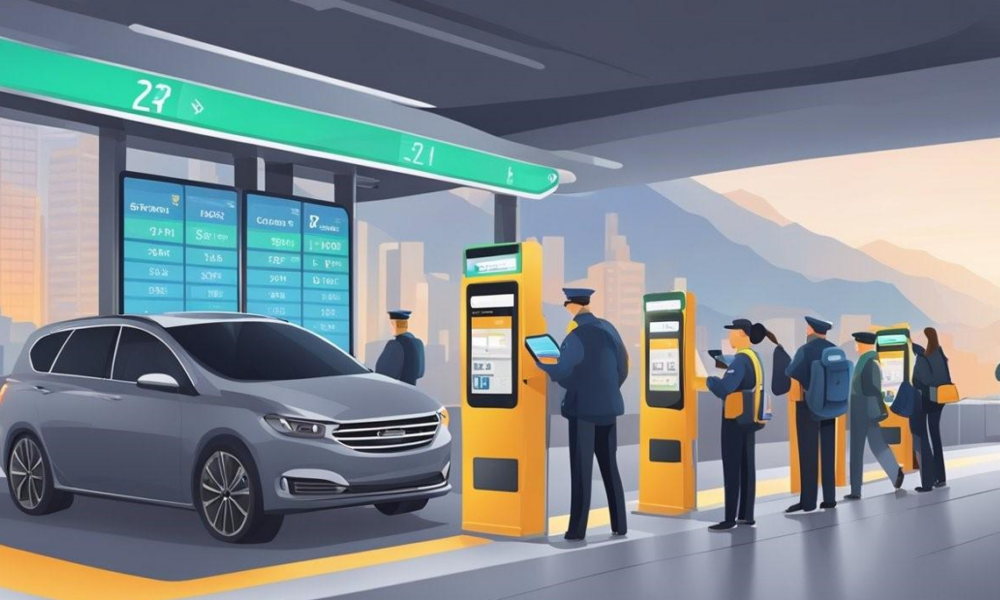How Technology is Revolutionizing Traffic Ticket Management

Technology has been changing the world in ways that were once unimaginable. One of the areas where technology has had a significant impact is traffic ticket management. With the rise of smart cities and the integration of AI, traffic ticket management has become more efficient and effective.
Gone are the days when traffic tickets were issued by a police officer who manually filled out a ticket book. Today, technology has made it possible for pay ticket online nj to be issued electronically, reducing the time and effort required to issue a ticket. Additionally, technology has made it easier to track and monitor traffic violations, making it easier to enforce traffic laws and reduce the number of accidents caused by reckless driving.
AI is also playing a significant role in traffic ticket management. With the use of AI, traffic violations can be detected in real-time, allowing for immediate action to be taken. This technology is being used in smart cities around the world to improve traffic flow and reduce congestion. As technology continues to evolve, it is clear that traffic ticket management will continue to be transformed, making our roads safer and more efficient for everyone.
The Impact of AI and IoT on Traffic Management
Smart Traffic Signals and Real-Time Data
With the help of AI and IoT, traffic signals are becoming smarter and more efficient. Smart traffic signals are equipped with sensors that can detect the presence of vehicles and pedestrians. They can also collect real-time data on traffic flow, allowing traffic management systems to adjust signal timing and optimize traffic flow.
According to a study by Chaklader et al., an adaptive traffic management system utilizing IoT and machine learning showcased successful queue-end detection and traffic state estimation implementations.
Smart traffic signals can also communicate with connected vehicles, providing drivers with real-time information on traffic conditions and suggesting alternate routes. This technology can help reduce congestion and improve safety on the roads.
IoT Devices and Connected Vehicle Technology
IoT devices and connected vehicle technology are also changing the way traffic is managed. With the help of IoT sensors, traffic management systems can collect data on traffic patterns, weather conditions, and road conditions. This data can be analyzed using data analytics and predictive analytics to identify potential traffic problems before they occur.
Connected vehicle technology allows vehicles to communicate with each other and with the infrastructure around them. This technology can help reduce the number of accidents on the roads by providing drivers with real-time information on potential hazards and suggesting alternate routes.
According to a report by Datafloq, smart city technologies such as IoT and AI are changing the way traffic is managed in urban areas. These technologies can help reduce congestion, improve safety, and make our cities more livable.
In conclusion, AI and IoT are having a significant impact on traffic management systems. Smart traffic signals and real-time data are making our roads safer and more efficient, while IoT devices and connected vehicle technology are helping to reduce congestion and improve traffic flow. As these technologies continue to evolve, we can expect to see even more improvements in the way we manage traffic in our cities.
Enhancing Road Safety and Efficiency
Advancements in technology have led to the development of intelligent traffic management systems that have significantly improved road safety and efficiency. AIpowered traffic management systems can help prevent accidents, optimize traffic flow, and reduce travel times.
Accident Prevention and Emergency Response
One of the key benefits of AI-powered traffic management systems is the ability to prevent accidents and improve emergency response times. These systems use smart tech such as sensors and cameras to detect potential hazards and alert first responders. They can also help emergency services navigate through traffic congestion to reach accident sites in a timely manner.
Traffic Flow Optimization and Congestion Mitigation
Traffic flow optimization and congestion mitigation are other areas where AI-powered traffic management systems excel. By analyzing traffic patterns and using predictive analytics, these systems can optimize traffic flow and reduce congestion. This not only results in a more efficient transportation system but also reduces the likelihood of accidents and improves road safety.
In conclusion, AI-powered traffic management systems have the potential to significantly enhance road safety and efficiency. By preventing accidents, improving emergency response times, and optimizing traffic flow, these systems can make our roads safer and more efficient for all users.
Sustainable Traffic Systems and Community Impact
As cities continue to grow and expand, the need for sustainable transportation systems becomes increasingly important. These systems aim to reduce pollution and improve air quality, while also promoting public transport and community engagement. Technology is playing a crucial role in the development of these systems, as it allows for more efficient traffic management and monitoring.
Environmental Sustainability and Air Quality
One of the main goals of sustainable traffic systems is to reduce the negative impact of transportation on the environment. This includes reducing greenhouse gas emissions and improving air quality. By promoting the use of public transport and alternative modes of transportation, such as cycling and walking, cities can significantly reduce their carbon footprint.
In addition, technology is being used to monitor air quality in real-time, allowing for more accurate assessments of pollution levels. This data can then be used to inform traffic management decisions, such as rerouting traffic away from areas with high levels of pollution.
Public Transport and Community Engagement
Promoting public transport is another key aspect of sustainable traffic systems. By providing reliable and efficient public transport options, cities can reduce the number of cars on the road, which in turn reduces traffic congestion and pollution.
Technology is also being used to improve the public transport experience. For example, real-time information systems allow commuters to track the location of buses and trains, making it easier to plan their journeys. Additionally, mobile ticketing systems allow commuters to purchase tickets using their smartphones, making the process more convenient and efficient.
Community engagement is also an important aspect of sustainable traffic systems. By involving citizens in the planning and development of these systems, cities can ensure that they are meeting the needs of their residents. This can include public consultations, community meetings, and feedback mechanisms.
In conclusion, sustainable traffic systems are essential for creating sustainable cities. By reducing pollution, promoting public transport, and engaging with communities, cities can create a more livable and environmentally friendly urban infrastructure. Technology plays a crucial role in the development of these systems, allowing for more efficient traffic management and monitoring.
Implementation Challenges and Future Directions
Policy Considerations and Cost Analysis
The implementation of technology in pay nj speeding ticket management has brought about several policy considerations and cost analysis. One of the most significant challenges is the cost of implementing smart technology in traffic management systems. The cost of new hardware, software, and maintenance can be high, and this can be a significant barrier to adoption for some municipalities.
Another challenge is the need for clear policies and guidelines for the use of technology in traffic management. Policymakers must ensure that the use of technology is in line with existing laws and regulations, and that the rights of citizens are protected. A clear policy framework can also help to ensure that the benefits of technology are maximized while minimizing any negative impacts.
The Role of 5G and Predictive Maintenance
The implementation of 5G technology in traffic management systems is expected to revolutionize the way traffic is managed. 5G networks provide lower latency, higher bandwidth, and faster speeds, which can help to improve operational efficiency and reduce delays. Predictive maintenance is another area where technology is expected to have a significant impact. By using data analytics and machine learning, traffic management systems can predict when maintenance is required, reducing downtime and improving efficiency.
While the implementation of technology in traffic ticket management has brought about several challenges, the benefits are significant. Smart technology can help to reduce traffic congestion, improve safety, and enhance operational efficiency. Policymakers must ensure that the implementation of technology is done in a way that maximizes benefits while minimizing any negative impacts.
In conclusion, the implementation of technology in traffic ticket management is an ongoing process that requires careful consideration of policy, cost, and technology. Policymakers must work together with technology providers to ensure that the benefits of technology are maximized while minimizing any negative impacts. The role of 5G and predictive maintenance is expected to be significant in the future, and policymakers must be prepared to adapt to these changes.







